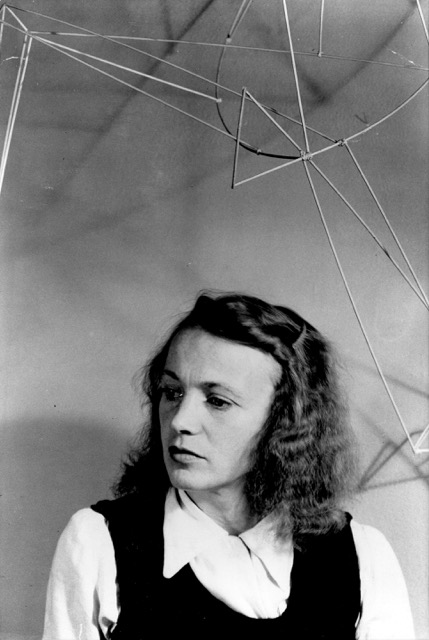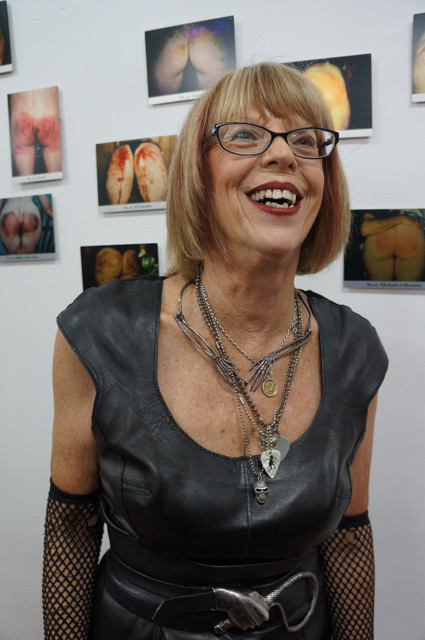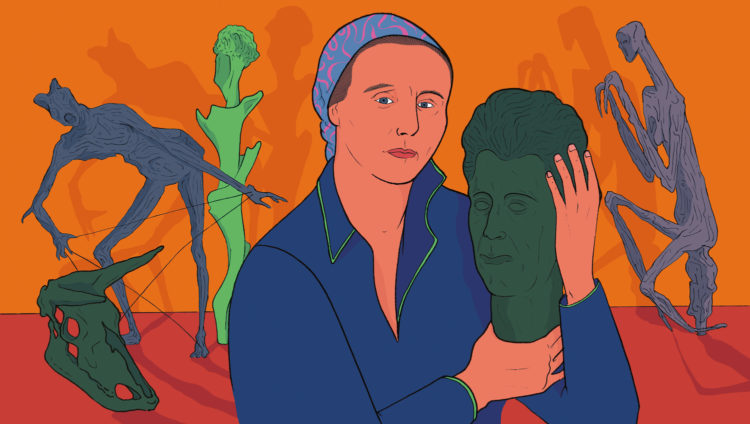Research
Germaine Richier, L’Araignée I, 1946, patinated bronze, horn base, 30 x 46 x 23 cm, © Musée Fabre de Montpellier Méditerranée Métropole, © Photo: Frédéric Jaulmes, © ADAGP, Paris
The French sculptor Germaine Richier (1902-1959) was the first woman to be given a solo retrospective at the musée national d’Art moderne in Paris, in 1956, and one of very few women artists to have seen international success in the 1940s and 1950s.
Most research on her career and her hybrid sculptures in the last thirty years has focused on historical and biographical information, or on formal analysis. Little has been written analysing her sculptures through the prism of feminism or gender studies. Her work is often seen merely as a response to the troubled post-war period she was living through. This thesis argues for a feminist “re-reading” of G. Richier’s work, one which contextualises her within the male-dominated world of the 1940s and 1950s, taking into account the fact that she did not herself acknowledge this feminist stance in her work. It aims to expand on recent feminist scholarship on G. Richier to gain a deeper understanding of the reciprocal relationships between her and her hybrid works.

Germaine Richier, La Mante, grande, 1946-1951, bronze, 168 x 72 x 72 cm, Musée-Collection Berardo, © ADAGP, Paris
With La Sauterelle [The Grasshopper, 1944], L’Araignée I [The Spider I, 1946], La Mante [The Mantis, 1946] and La Fourmi [The Ant, 1953], G. Richier questioned normative assumptions prevalent in the post-war period by challenging contemporary representations of female gender, body, and subjectivity. This thesis investigates how the artist explored metamorphosis and hybridity in a unique way, challenging the work of the male-dominated avant-garde of the time by presenting a model of femininity that was performed rather than fixed. It also examines how the sculptures, together with statements G. Richier made about her work and about being an artist, influenced the reception of her work and artistic persona in the masculinist context of the time.
G. Richier’s female hybrids are explicit constructs in the process of performing their subjectivities, positing the female gender as complex, ambiguous, and changeable. They are a mix of movement and restraint, strength and vulnerability. The “women-insects” are not objects of the eroticizing male gaze but deformed and macabre creatures with bodies that have lived and experienced, and are still ploughing on. Active subjects in constant movement, their bodies and identities undergo continual metamorphosis, transgressing a reality that remains strangely familiar. G. Richier focused on the subjective experience and agency of the individual, a subversively feminist representation much closer to contemporary discourses on gender.
Although G. Richier did not herself acknowledge this feminist dimension, she questioned the gendered concept of the artist by presenting through her work and statements the idea of a “masculine” female artist, while seeming to consider gender unimportant. By using both languages, she eliminated the binaries of woman/man and female artist/male artist altogether, proposing instead an autonomous definition of herself as an artist. These transgressions produced a reception in the post-war period as ambiguous as her works. While her works were praised by prominent critics, they nevertheless masculinised her (something she encouraged). The ambiguities of the hybrids and of her statements thus influenced and mirrored the way she was perceived as a woman and sculptor.
This thesis shows that a new examination of G. Richier and her hybrid works is needed. Her female creatures are not only a response to their socio-cultural context (i.e. the post-war trauma and masculinist society) but also a new way to view how subjects experience. As early as the 1940s, the artist was exploring the kind of “fluid” subjectivity that would decades later be emphasised by postmodernist scholars. By blurring seemingly fundamental boundaries and destabilising the categories of “woman” and “artist”, she offered alternative ways of being and perceiving. G. Richier articulated with her hybrids a powerful performance of female agency and subjectivity.
Master research thesis in art history supervised by Dr Peter Muir and defended by Marine Picard on 25 September 2017 at The Open University (Milton Keynes, United Kingdom).
Marine Picard, "Germaine Richier and the Performance of Female Subjectivity and Agency." In Archives of Women Artists, Research and Exhibitions magazine, . URL : https://awarewomenartists.com/en/magazine/germaine-richier-et-la-performance-de-la-subjectivite-et-de-lautonomie-feminines/. Accessed 17 July 2025











